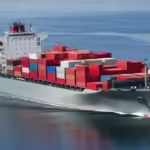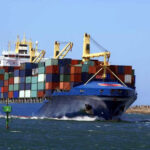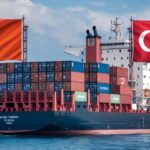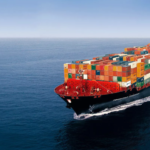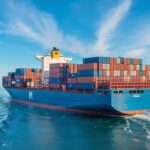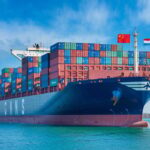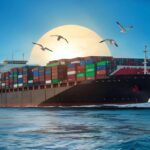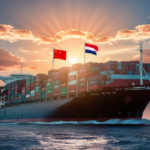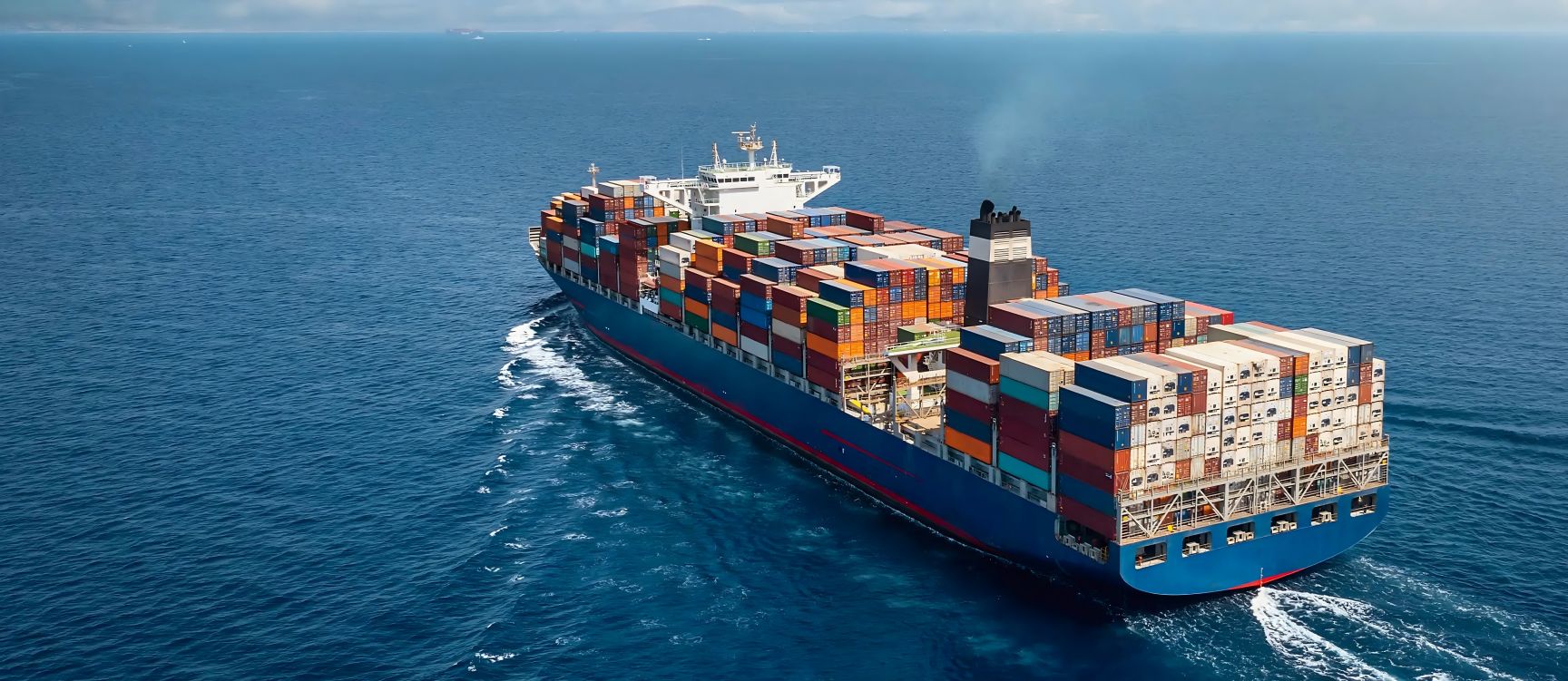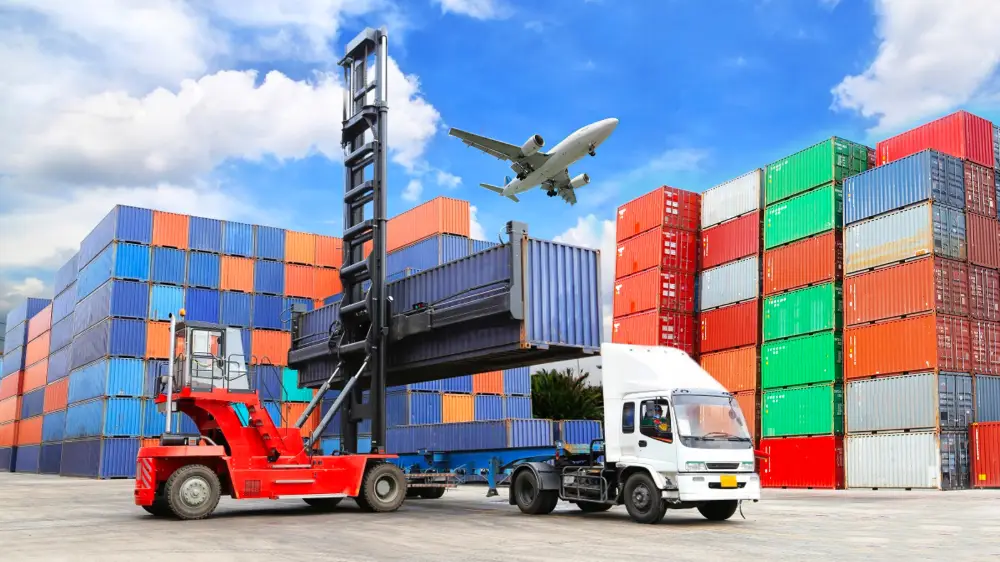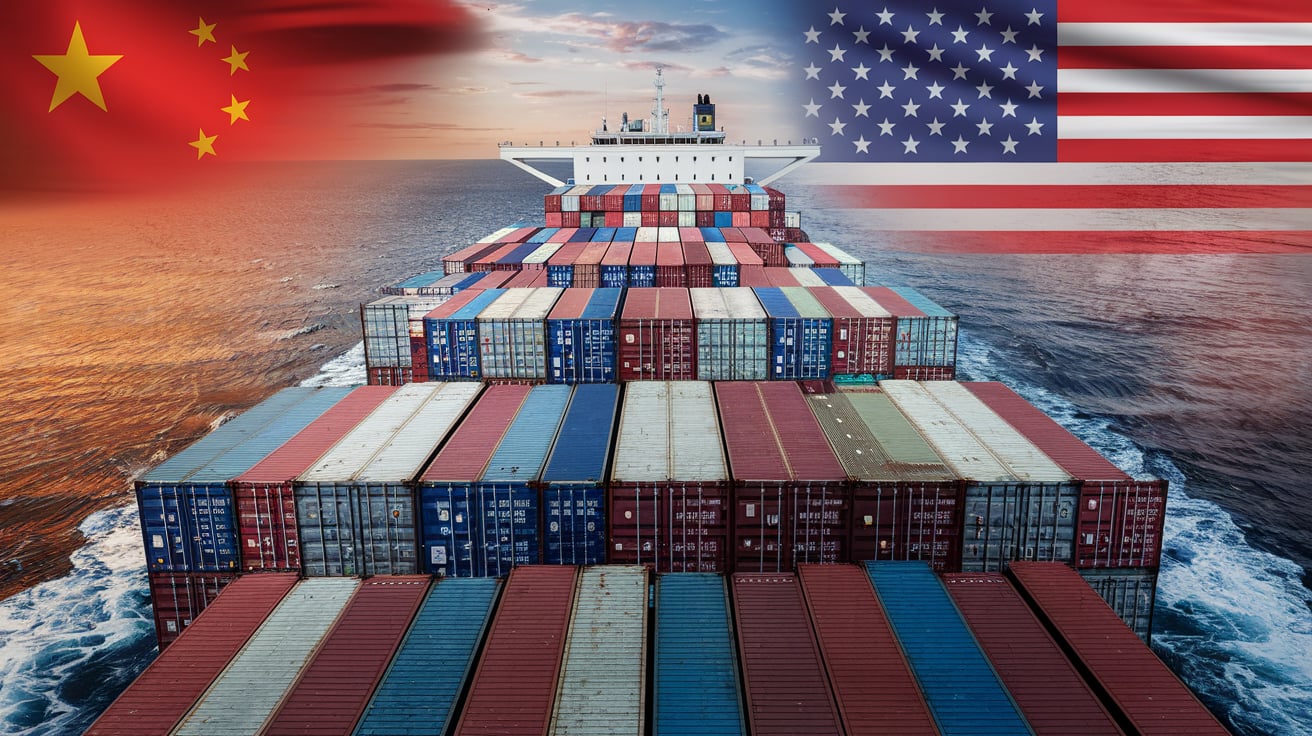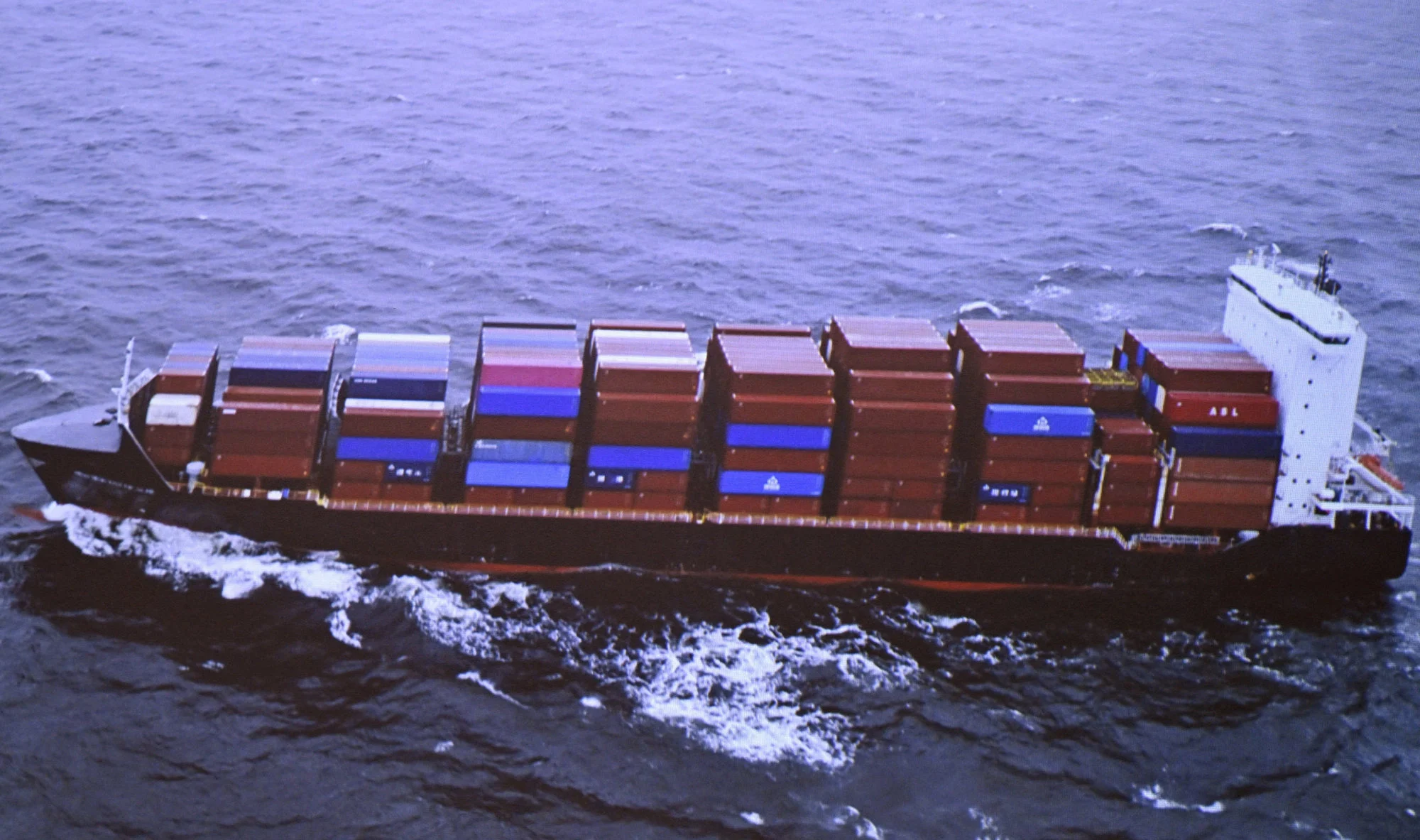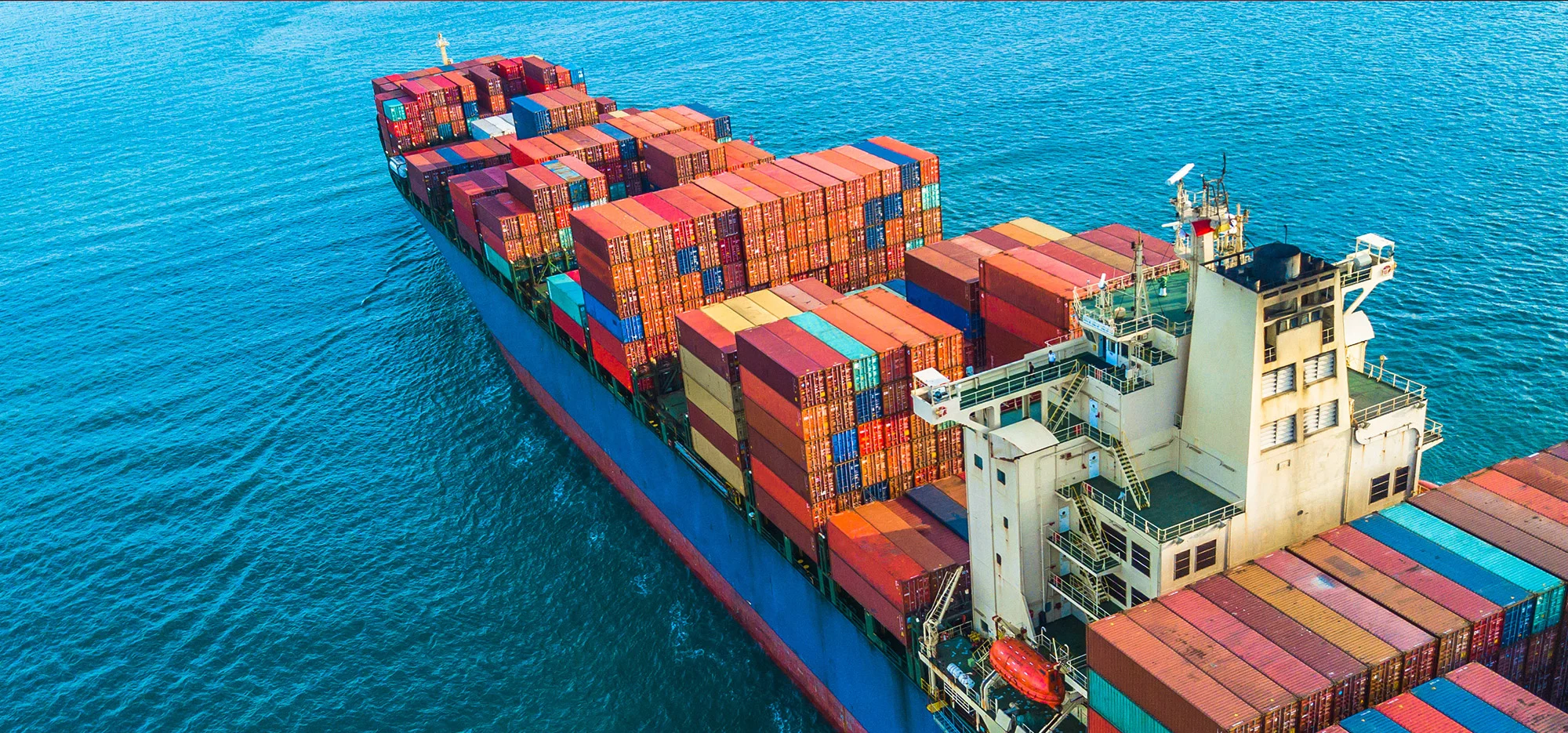Shipping goods from China to Romania presents businesses with a variety of options, but sea freight stands out as one of the most advantageous methods. This comprehensive overview delves into the benefits of sea freight, highlighting its cost-effectiveness, capacity for large shipments, and environmental considerations.

Understanding Sea Freight: A Comprehensive Overview
Sea freight, or ocean freight, refers to the transportation of goods via sea routes, typically employing cargo ships, container vessels, or bulk carriers. This method of shipping is widely utilized for its cost-effectiveness and efficiency, especially when transporting large quantities of goods over long distances.
Goods can be shipped in different formats, including full container loads (FCL), less than container loads (LCL), and bulk shipments. Each option caters to different shipping needs and budgets, providing flexibility to customers importing goods from China to Romania.
The Importance of Sea Freight in Global Trade
The role of sea freight in global trade cannot be overstated. Over 90% of the world’s trade is carried out through maritime transport, a testament to its significance. Here are some critical points highlighting the importance of sea freight in global commerce:
| Aspect | Details |
|---|---|
| Cost Efficiency | Sea freight is generally more economical than air freight, especially for bulky shipments. Lower fuel costs per ton-mile contribute to this advantage. |
| Capacity | Cargo vessels can carry large volumes of goods, making sea freight ideal for bulk shipments. A single container can hold a significant amount of merchandise. |
| Environmental Impact | Shipping by sea is generally considered more environmentally friendly compared to road or air transport. Per ton-mile, it produces fewer greenhouse gas emissions. |
| Global Connectivity | Sea freight facilitates international trade by connecting continents. Major ports in China, such as Shanghai and Shenzhen, provide direct access to European markets. |
| Diverse Cargo | A wide range of goods can be transported via sea freight, from raw materials to finished products, including heavy machinery and perishable items in refrigerated containers. |
| Customs Compliance | Shipping through established sea routes often comes with predefined customs regulations, ensuring smoother customs clearance processes. This is especially important for importers in Romania. |
By understanding the dynamics of sea freight, importers can make informed decisions regarding their logistics strategies. The seamless movement of goods via sea routes can significantly impact a company’s supply chain efficiency.
Dantful International Logistics offers comprehensive services tailored for efficient sea freight shipping from China to Romania. Leveraging a network of trusted carriers and experts, we ensure timely and reliable delivery of your goods. For a highly professional, cost-effective, and high-quality one-stop international logistics service, choose Dantful to facilitate your shipping needs.
What to Consider When Shipping by Sea from China to Romania
When selecting sea freight as your shipping method, it’s crucial to consider several factors that can influence both cost and delivery timelines:
- Transit Times: Sea freight generally takes longer than air freight, with transit times ranging from 20 to 45 days depending on the shipping route and port congestion.
- Shipping Costs: Understanding the cost structure, which may include freight charges, port handling fees, and customs duties, is essential in budgeting for your shipments.
- Insurance Services: Protecting your cargo with adequate insurance is vital. Dantful offers tailored insurance services to secure your goods in transit.
- Customs Clearance: Navigating customs regulations can be complex. Partnering with a knowledgeable freight forwarder can streamline the customs clearance process, ensuring compliance with Romanian import regulations.
By considering these factors and leveraging the expertise of a reputable freight forwarder like Dantful, you can optimize your shipping strategy and ensure the safe arrival of your goods.
You may be interested in the following related articles:
- Shipping From China to Serbia
- Shipping From China to Malta
- Shipping From China To Belarus
- Shipping From China To Cyprus
- Shipping From China to Turkey
- Shipping From China to Greece
Advantages of Sea Freight from China to Romania
Cost-Effective
One of the primary advantages of sea freight from China to Romania is its cost-effectiveness. Compared to air freight, which can be significantly more expensive, sea freight allows for the transportation of large volumes at a fraction of the price. The lower operational costs associated with sea transport are attributed to the ability of cargo ships to carry substantial loads, optimizing fuel consumption per ton. This is particularly advantageous for businesses looking to maximize their profit margins while minimizing shipping expenses.
Accommodates Large Shipments
Sea freight is uniquely suited for accommodating large shipments. Cargo vessels can transport hundreds of containers simultaneously, making it a preferred choice for companies dealing in bulk goods or heavy machinery. Importers can benefit from full container loads (FCL), which allow for the maximum utilization of shipping assets. With sea freight, businesses can consolidate their shipments, reducing the frequency of shipments and overall logistical complexity.
Versatile Container Options
The versatility of container options available in ocean freight enhances its appeal. Importers can choose from various container types depending on their cargo requirements:
- Standard Dry Containers: Ideal for general cargo.
- Refrigerated Containers (Reefers): Essential for perishable goods that require temperature control.
- Flat Rack Containers: Suited for oversized or heavy equipment that cannot fit in standard containers.
This variety ensures that all types of cargo can be transported safely and efficiently, making it easier for businesses to tailor their shipping needs based on the specific characteristics of their products.
Reliable Transit Times
While sea freight may take longer than air freight, it offers reliable transit times that can be predictable for planning. Shipping schedules are generally consistent, with established routes and departure times. Importers can effectively manage inventory levels, as they can anticipate delivery timelines based on the scheduled voyage duration. This predictability can help businesses in Romania align their logistics and supply chain operations more efficiently.
Environmentally Friendly
The environmental considerations associated with sea freight make it an attractive option for eco-conscious businesses. Shipping by sea produces lower greenhouse gas emissions per ton-mile compared to other modes of transport. The shipping industry has also made significant strides in improving fuel efficiency and reducing emissions through technological advancements. By choosing sea freight, businesses can contribute to a more sustainable supply chain and gain a competitive advantage in a market increasingly focused on environmental responsibility.
Reduced Risk of Damage
When shipping goods, the risk of damage is always a concern. However, sea freight often provides a lower risk of damage for larger items. Ocean-going vessels are equipped with specialized equipment to secure cargo, and goods are typically stored in sturdy containers designed to withstand harsh ocean conditions. Additionally, the longer shipping duration allows for better handling and care during transit, further reducing the likelihood of damage. This results in fewer claims and lower costs related to product replacement or repairs.
The Process of Shipping via Sea Freight
Step-by-Step Guide to Sea Freight Shipping
-
Preparation and Documentation: Begin by preparing all necessary documentation, including the bill of lading, commercial invoice, packing list, and any required certificates for customs clearance. Proper documentation is critical to avoid delays and fines.
-
Choosing a Freight Forwarder: Select a reputable freight forwarder like Dantful International Logistics. With extensive experience in handling sea freight from China to Romania, a seasoned forwarder can streamline the process and offer valuable insights into navigating customs requirements.
-
Cargo Booking: Contact your chosen freight forwarder to book your cargo. Provide them with information regarding the type of cargo, volume, and preferred shipping dates.
-
Container Loading: Once your cargo is ready, it will be loaded into the designated container. Ensure that the cargo is secured properly to prevent damage during transit.
-
Customs Clearance: The freight forwarder will manage customs clearance processes at both the export and import stages. This includes filing necessary paperwork and paying duties or taxes as required.
-
Shipping: The cargo is then transported to the departure port and loaded onto the vessel. Tracking systems are usually available to monitor the shipment’s progress.
-
Arrival and Unloading: Upon arrival at the port of discharge in Romania, the cargo will be unloaded, and further customs clearance processes will take place.
-
Delivery to Final Destination: Once cleared, the cargo is either picked up by the recipient or arranged for delivery through additional logistics services to the final destination.
Choosing the Right Freight Forwarder
Selecting the right freight forwarder is crucial for a successful shipping experience. Key considerations include:
- Expertise and Experience: Look for a forwarder with a proven track record in handling sea shipments, particularly from China to Romania.
- Services Offered: Make sure they provide comprehensive services, including customs clearance, insurance, and logistics support.
- Network and Partnerships: A well-established forwarder will have strong relationships with shipping lines and port authorities, ensuring better service and reliability.
- Customer Reviews and Testimonials: Research feedback from previous clients to gauge the forwarder’s reputation and service quality.
- Transparency in Pricing: Ensure that the freight forwarder provides clear and detailed information about pricing, including any additional fees.
Choosing Dantful International Logistics ensures you benefit from a highly professional, cost-effective, and efficient shipping process, tailored to meet your specific needs when importing goods from China to Romania.
Read More:
- Shipping From China To Netherlands
- Shipping From China To Spain
- Shipping From China To Germany
- Shipping From China To France
- Shipping From China to Italy
- Shipping From China To Poland
- Shipping From China to United Kingdom
Sea Freight Costs from China to Romania
Understanding the cost structure associated with sea freight from China to Romania is essential for businesses planning to import goods. Various factors can influence the overall shipping costs, including distance, cargo type, shipment volume, packaging, and additional services required. Below are key elements that contribute to sea freight costs:
Key Cost Factors
| Cost Element | Description |
|---|---|
| Freight Charges | The primary cost associated with shipping goods, calculated based on the weight or volume of the cargo. Rates can vary depending on shipping routes and carriers. |
| Container Fees | Costs related to the type of container used (e.g., FCL or LCL) and its availability. Higher fees may apply for specialized containers like reefers. |
| Port Handling Fees | Charges incurred for loading and unloading cargo at the port. This includes terminal handling fees and equipment charges. |
| Customs Duties and Taxes | Import duties and other taxes imposed by Romanian customs authorities based on the value of the goods being imported. Duty rates vary depending on the product category. |
| Insurance Costs | Premiums for insuring goods during transit. Dantful provides tailored insurance services to protect your shipments from damage or loss. |
| Transportation to/from Port | Additional costs for moving goods to the port of departure in China and from the port of arrival in Romania to the final destination. |
| Documentation Fees | Charges for preparing and processing necessary shipping documents, such as the bill of lading, commercial invoice, and customs declarations. |
Example Cost Breakdown
To illustrate the potential costs involved in shipping via sea freight from China to Romania, consider the following hypothetical scenario for shipping a 20-foot container (FCL):
| Cost Component | Estimated Cost (USD) |
|---|---|
| Freight Charges | $1,200 |
| Container Fees | $300 |
| Port Handling Fees | $150 |
| Customs Duties and Taxes | $200 |
| Insurance Costs | $100 |
| Transportation to/from Port | $200 |
| Documentation Fees | $50 |
| Total Estimated Cost | $2,300 |
Note: Costs may vary based on market rates, seasonal demand, and other factors. It is advisable to request quotes from freight forwarders like Dantful International Logistics for accurate pricing tailored to your specific needs.
Sea Freight Transit Times from China to Romania
The transit times for sea freight from China to Romania can vary based on several factors, including the shipping route, port congestion, and whether the shipment is an FCL or LCL. Understanding these transit times helps businesses plan their inventory and logistics more effectively.
Average Transit Times
| Shipping Route | Estimated Transit Time |
|---|---|
| Shanghai to Constanța | 30-35 days |
| Shenzhen to Constanța | 28-33 days |
| Guangzhou to Constanța | 32-37 days |
| Ningbo to Constanța | 30-36 days |
| Hong Kong to Constanța | 35-40 days |
These estimates include the time spent in transit on the vessel and may not account for additional time spent on customs clearance at both the port of departure in China and the port of arrival in Romania.
Factors Influencing Transit Times
- Port Congestion: High traffic at either the departure or arrival ports can lead to delays. Keeping track of port conditions can help mitigate this risk.
- Shipping Line Reliability: Different shipping lines may have varying schedules and reliability. Selecting a reputable freight forwarder, like Dantful, can assist in navigating these challenges.
- Customs Clearance: Efficient customs processes can ensure faster delivery, while delays in documentation or inspections can extend transit times. Partnering with knowledgeable freight forwarders can enhance compliance and expedite clearance.
- Weather Conditions: Severe weather can impact vessel schedules and lead to delays. Keeping abreast of weather forecasts can help manage expectations regarding delivery timelines.
By considering these factors, businesses can better anticipate transit times and plan their logistics strategies accordingly. Utilizing the expertise of a reliable freight forwarder like Dantful International Logistics can significantly enhance shipping efficiency and ensure timely delivery of goods from China to Romania.
Challenges and Solutions in Sea Freight Logistics
While sea freight offers numerous advantages for importing goods from China to Romania, it also presents several challenges. Understanding these challenges and implementing effective solutions is crucial for ensuring a smooth shipping process.
Common Challenges in Sea Freight Logistics
- Port Congestion:
- Issue: High volumes of cargo can lead to delays in loading and unloading at busy ports.
- Solution: Utilize advanced booking systems and work closely with freight forwarders to plan shipments during off-peak hours, optimizing port utilization.
- Customs Delays:
- Issue: Inefficient customs clearance can result in prolonged wait times and increased costs.
- Solution: Partner with experienced freight forwarders like Dantful International Logistics, which can facilitate smoother customs processes by ensuring all documentation is in order and compliant with local regulations.
- Logistical Complexity:
- Issue: Coordinating multiple aspects of the shipping process, such as transportation, storage, and tracking, can be complicated.
- Solution: Implement integrated logistics solutions with visibility tools that provide real-time tracking and communication across the supply chain, simplifying the logistics process.
- Cargo Damage:
- Issue: The risk of damage to goods during transit due to improper loading or external factors such as weather.
- Solution: Employ specialized containers suited to the cargo type (e.g., refrigerated containers for perishables) and ensure proper loading techniques to minimize risks.
- Regulatory Compliance:
- Issue: Adhering to varying regulations and standards in both China and Romania can be challenging.
- Solution: Stay updated on relevant regulations and engage with a knowledgeable freight forwarder to navigate the complexities of international shipping laws and customs duties.
- Environmental Regulations:
- Issue: Increasingly stringent environmental regulations can impact shipping practices.
- Solution: Embrace greener shipping practices and explore partnerships with carriers that prioritize sustainability, such as those using eco-friendly vessels.
By proactively addressing these challenges, businesses can enhance their sea freight operations, ensuring reliability and efficiency in the shipping process from China to Romania.
Future Trends in Sea Freight from China to Romania
The sea freight industry is evolving rapidly, driven by technological advancements and changing market dynamics. Understanding these trends is essential for businesses looking to optimize their logistics strategies.
The Impact of Technology on Sea Freight Efficiency
- Digitalization:
- The adoption of digital platforms for managing logistics processes is transforming the sea freight industry. Technologies like blockchain enhance transparency and traceability, reducing the risk of fraud and improving data accuracy.
- Automation:
- Automation in port operations, such as automated cranes and container handling systems, is increasing efficiency and reducing turnaround times at ports. This results in faster loading and unloading processes.
- Artificial Intelligence (AI):
- AI is being utilized to analyze shipping data and enhance decision-making. Predictive analytics can optimize shipping routes, forecast demand, and improve inventory management.
- Internet of Things (IoT):
- IoT devices facilitate real-time tracking of cargo conditions, such as temperature and humidity. This is especially vital for perishable goods, ensuring they remain in optimal condition during transit.
- Green Technologies:
- The industry is increasingly adopting environmentally friendly practices, including the use of low-sulfur fuels and energy-efficient vessels. These innovations aim to reduce the carbon footprint of sea freight, aligning with global sustainability goals.
Predictions for Sea Freight Growth
- Increased Global Trade:
- As economies continue to recover and expand, global trade volumes are expected to rise, leading to higher demand for sea freight services. The World Trade Organization (WTO) predicts that global merchandise trade could grow by 8% in 2021 and 4% in 2022, further increasing reliance on shipping.
- E-commerce Impact:
- The surge in e-commerce is driving higher volumes of small shipments, creating opportunities for sea freight to expand its role in fulfilling international orders. Companies will increasingly leverage sea freight for cost-effective bulk shipping.
- Infrastructure Investments:
- Ongoing investments in port infrastructure and logistics networks will enhance capacity and efficiency. Initiatives like China’s Belt and Road Initiative (BRI) aim to improve connectivity and trade routes, potentially benefiting the shipping landscape between China and Romania.
- Focus on Resilience:
- Companies will place a greater emphasis on building resilient supply chains that can withstand disruptions. This may lead to strategic shifts toward diversified shipping routes and multi-modal logistics solutions, incorporating both sea and land transportation.
- Regulatory Changes:
- New environmental regulations may prompt shipping companies to invest in greener technologies and practices. Compliance with these regulations will be crucial for maintaining competitiveness in the market.
By keeping abreast of these trends and leveraging technology, businesses involved in sea freight from China to Romania can position themselves for growth and success in an ever-evolving shipping landscape. Dantful International Logistics is equipped to navigate these changes, offering innovative solutions tailored to meet the needs of global traders.

Young Chiu is a seasoned logistics expert with over 15 years of experience in international freight forwarding and supply chain management. As CEO of Dantful International Logistics, Young is dedicated to providing valuable insights and practical advice to businesses navigating the complexities of global shipping.

